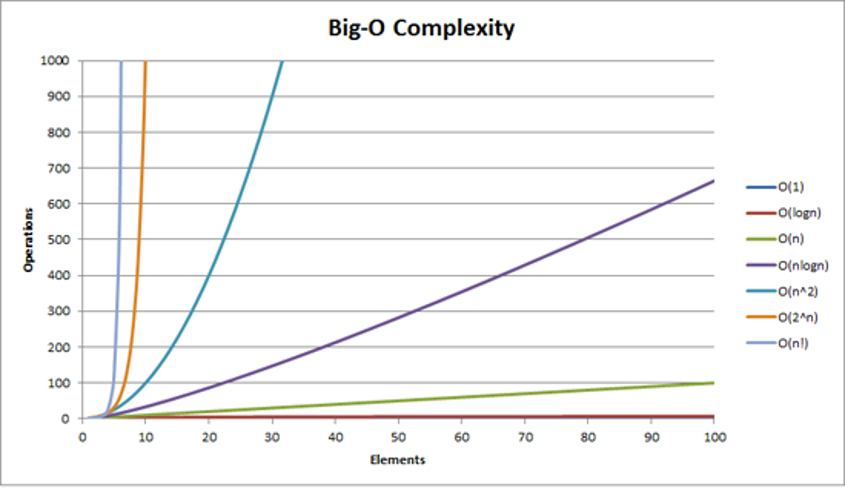Big O Notation
- the speed and memory usage of an algorithm aren't necessarily fixed
- they might change depending on the input
- it is a powerful tool that allow us to generalize the space-time complexity of an algorithm as a function of its input size
- variables used in Big O notation denote the sizes of inputs to algorithms
- e.g.: O(n) might be the time complexity of an algorithm that traverses through an array of length n
- similarly, O(n + m) might be the time complexity of an algorithm that traverses through an array of length n and through a string of length m
- not that in the context of coding interviews, Big O notation is usually understood to describe the worst-case complexity of an algorithm
- even though the worst case complexity might differ from the average-case complexity
- e.g.: some sorting algorithms have different time complexities depending on the layout of elements in their input array
- in rare cases, their time complexity will be much worse than in more common cases
- similarly, an algorithm that takes in a string and performs special operations on uppercase characters might have a different time complexity when run on a input string of only uppercase characters vs on an input string with just a few uppercase characters
common complexities and their Big O notations ordered from fastest to slowest

Constant: O(1)
Logarithmic: O(log n)
Linear: O(n)
- do not join them together if the input value are from a different source
- O(n + m)
Log-linear: O(n log n)
Quadratic: O(n2)
- drop the smaller unit if the input value are from the same source
- O(n2 + n) = O(n2)
- do not drop the smaller unit if the input value are from a different source
- O(n2 + 2m) = O(n2 + m)
Cubic: O(n3)
Exponential: O(2n)
Factorial: O(n!)
4! = 4 3 2 * 1 = 24